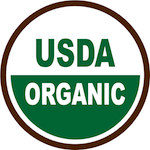Shopping for healthy foods can be daunting, especially when it comes to understanding nutritional labels. Grams, calories, percentages, recommended allowances. Is there a way to quickly assess whether a food is “healthy” or not?
In an article from The Daily Beast – Your Health Food’s Hidden Sugar Bomb – Michael Schulson discussed why we so readily fall under the spell of factory food company marketing. Using a Trojan Horse metaphor, he showed how a single healthy ingredient along with text and pictures promoting goodness lulls us into a sense of safety. With our caution disarmed, we simply stop questioning whether there are any hidden Greeks ready to sneak out and attack our bodies.
 Here are my six points, in order of significance, to identify the Trojan Horses and arm us all against them.
Here are my six points, in order of significance, to identify the Trojan Horses and arm us all against them.
Point 1: Buyer beware, Trojan Horses abound! Food companies are out to make money and, for the most part, that’s all they care about. After all, we live in a capitalistic society where companies have to answer to their stockholders, not to mention gullible consumers clamoring for more junk! Until this seeps inside you, you are at their mercy. Never let down your guard, especially since it’s amazing and sad what marketing BS the USDA allows. We need to remain skeptical with all packaged foods no matter the company, the pictures, or the earthy healthy verbiage. (There are, of course, health and socially conscious food companies that deserve our support, but mostly this isn’t the case.)
Point 2: Buy real food so you can’t be fooled! If you buy whole foods in their “natural form,” i.e., they can look cut, washed, and prepared for sale, but otherwise like they came off the land, you can’t be fooled by the factory food’s marketing evil geniuses because there are no added ingredients and therefore no BS to slip you up. It’s just a vegetable, some legumes (beans, lentils and peas), a slab of meat, a piece of fruit, or a bag of whole grain. BONUS: Buying foods this way can help support your local farmers, ranchers, and fisheries.
 Point 3: Look for the Organic label on the package. We can’t always purchase whole foods, so when purchasing packaged goods that have more than one ingredient, look for one of these the organic labels signifying they are pretty clear of unhealthy ingredients: 1) The USDA Organic circle, 2) Quality Assurance International (QAI) Certified Organic (usually found on the back of containers), or 3) Oregon Tilth. Organic foods have way less pesticide/herbicide residue, and organic plant foods tend to have more antioxidants.
Point 3: Look for the Organic label on the package. We can’t always purchase whole foods, so when purchasing packaged goods that have more than one ingredient, look for one of these the organic labels signifying they are pretty clear of unhealthy ingredients: 1) The USDA Organic circle, 2) Quality Assurance International (QAI) Certified Organic (usually found on the back of containers), or 3) Oregon Tilth. Organic foods have way less pesticide/herbicide residue, and organic plant foods tend to have more antioxidants.
Point 4: If you didn’t see one of the Organic labels, look at the ingredient list for chemicals and GMO foods. Read the ingredients at the bottom of the nutritional label. A ton of ingredients may be a red flag that this isn’t a healthy food, particularly if there are ingredients you cannot pronounce or have numbers accompanying them. Finally, it’s a major red flag if any of the ingredients are GMO (Genetically Modified Organisms): Corn (including any derivatives: Corn Syrup, Corn Starch, Corn oil, Cornmeal, Fructose (HFCS – High Fructose Corn Syrup), Dextrose, Glucose, Vegetable oil, Modified Food Starch); Soybeans (including Soy meal, Lecithin, Isoflavin, Tofu, Soy Protein Isolate, TVP (textured vegetable protein), Vitamin E, Xanthamgum, Tempeh); Canola [AKA Rapeseed] (Vegetable oil); Cotton (Cottonseed Oil); and Sugar Beets (i.e., sugar, pure sugar, including brown sugar, unless it says pure cane sugar, which is from sugar cane and is not a GE crop). PLEASE NOTE: There are non-GMO varieties of corn, soybeans, canola on the market and in packages, and the labeling will generally inform you so. If they don’t, you must assume the worst – that they are GMOs.
Point 5: If you haven’t yet dropped that product to the floor, look at the ingredients and scream if any type of sugar is near the top of the list! Ingredients are listed in order by weight. If you see any form of sugar in the top three, yell “Trojan Horse!” and stomp your feet. Don’t be fooled by words like “wholesome,” “organic,” “concentrated,” or “natural.” While not all sugars are metabolized in the same way, in general, sugar is sugar is sugar, and too much is harmful. And boy, do we eat too much sugar.
 Behold the different forms and names of sugars: 1) Anything ending in “..ose” (fructose, high fructose corn syrup, dextrose, glucose, sucrose, maltose, lactose, saccharose and xylose); 2) Everything including the word “sugar” (beet sugar, cane sugar, invert sugar, palm sugar, raw sugar, turbinado sugar, coconut and coconut palm sugars, brown sugar); 3) Any ingredient with the word “syrup” (barley malt syrup, rice syrup , brown rice syrup, corn syrup, corn syrup solids, maple syrup, sorghum syrup, and plain old syrup); 4) Anything including the word “juice” (cane juice, cane juice crystals, dehydrated cane juice, evaporated cane juice, fruit juice concentrates such as grape, apple and pear); 5) Everything with “cane,” “corn,” “dextrin,” or “sweetener” (cane crystals, corn sweetener, dextrin, altodextrin); and 6) A few important stragglers: molasses, treacle, and yes, even honey and agave. Remember, sugar is sugar!
Behold the different forms and names of sugars: 1) Anything ending in “..ose” (fructose, high fructose corn syrup, dextrose, glucose, sucrose, maltose, lactose, saccharose and xylose); 2) Everything including the word “sugar” (beet sugar, cane sugar, invert sugar, palm sugar, raw sugar, turbinado sugar, coconut and coconut palm sugars, brown sugar); 3) Any ingredient with the word “syrup” (barley malt syrup, rice syrup , brown rice syrup, corn syrup, corn syrup solids, maple syrup, sorghum syrup, and plain old syrup); 4) Anything including the word “juice” (cane juice, cane juice crystals, dehydrated cane juice, evaporated cane juice, fruit juice concentrates such as grape, apple and pear); 5) Everything with “cane,” “corn,” “dextrin,” or “sweetener” (cane crystals, corn sweetener, dextrin, altodextrin); and 6) A few important stragglers: molasses, treacle, and yes, even honey and agave. Remember, sugar is sugar!
If any of these “sugars” are at the top of the list and you’re still interested, look on the nutrition label for the grams of sugar. Under “Total Carbohydrates” the grams of Fiber are healthy, so be happy if they’re high. But be very concerned about the “Sugars” listed right under them. There is no need to calculate calories or percentages, but if you see more than 5 grams here, you’ve got some deciding to do! If you see more than 10 grams, strongly consider steering clear. (Of course, some natural, healthy, whole foods, like frozen berries, will show a lot of sugar here, but that’s OK – they’re not added sugars that require being listed as ingredients – they are part of the whole food also containing fiber and minerals and vitamins.)
Point 6: Lastly, watch out for “Trans Fat.” This is the only fat you have to be fearful of. Luckily, if you buy whole foods in their natural forms, you needn’t worry since the vast majority of trans fats are manufactured and therefore found in factory foods.
Regarding our general fear of “fat,” the far greater enemy and more pertinent issue is our overall caloric intake. Any excess calories, whether from fats, proteins or carbohydrates, leads to them being stored as fat in our bodies. That’s right. It’s just as easy to gain weight from eating too much fat, as too many carbohydrates, or too much protein. So watch your calories, but you needn’t be particularly concerned about how much of them are fat.
In short it’s simply: Beware, buy whole and organic, and avoid chemicals, GMOs, sugars, and trans fats. After awhile all this will become second nature.
About Ina Denburg
 Ina is a Lifestyle Coach and Wellness Educator who has lived and worked on the path of health and wellness for 30 years. She is passionate about wellness, her practice continuumLiving, is devoted to helping others discover, define and live it for themselves – at home, at work, and in school.
Ina is a Lifestyle Coach and Wellness Educator who has lived and worked on the path of health and wellness for 30 years. She is passionate about wellness, her practice continuumLiving, is devoted to helping others discover, define and live it for themselves – at home, at work, and in school.
GMO-Free Kitchen – a service Ina provides for individuals or groups. All consumer aspects from understanding to eliminating GMO foods, from cleaning them out of your pantry to shopping and replacing with upgraded food items, to learning how to cook delicious GMO-free meals.
Read more about Ina’s background and experience here.
Photo credits: (Used with permission under Creative Commons license)
Trojan horse – quantumlars
Spoonful of sugar – Caro Wallis
